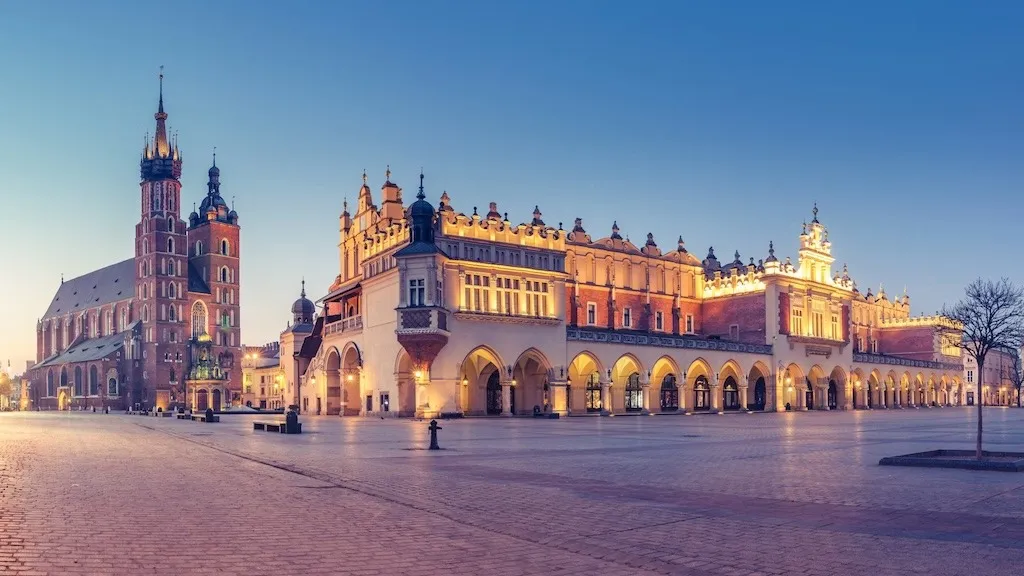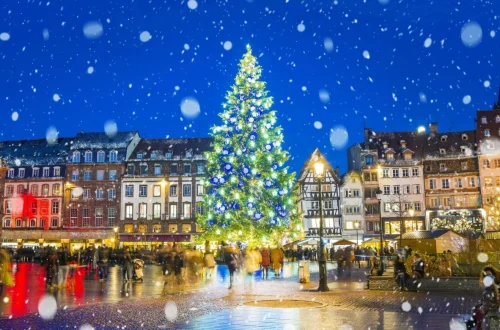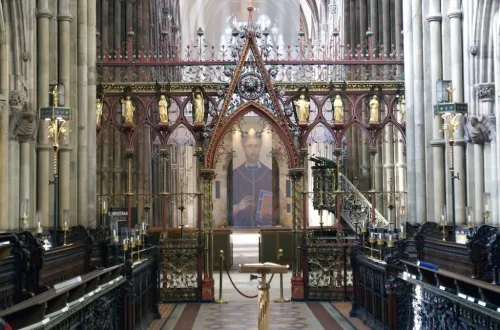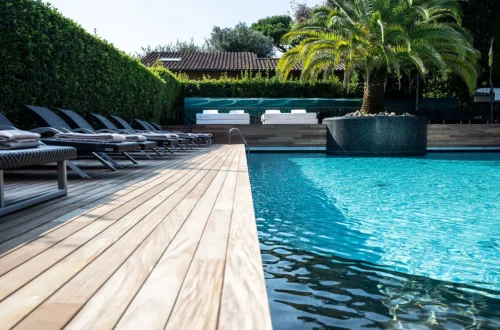Kraków is one of Europe’s most vibrant cities. It’s not just the former capital of Poland (1038-1596), it’s also awash with history and culture… as well as some truly bizarre myths and legends. Importantly for a traveller on a budget, it’s also very reasonably priced. Tempted? I knew you would be. So let’s dive in.
Getting around
I flew there with easyJet from Gatwick, jumped on a train from Kraków airport into the city centre (they run twice an hour) and then walked. There are trams and buses but it’s all very compact so I’d recommend shanks’s pony. You’ll not only save a little money, you’ll also get to see more of the city, so it’s a double win.
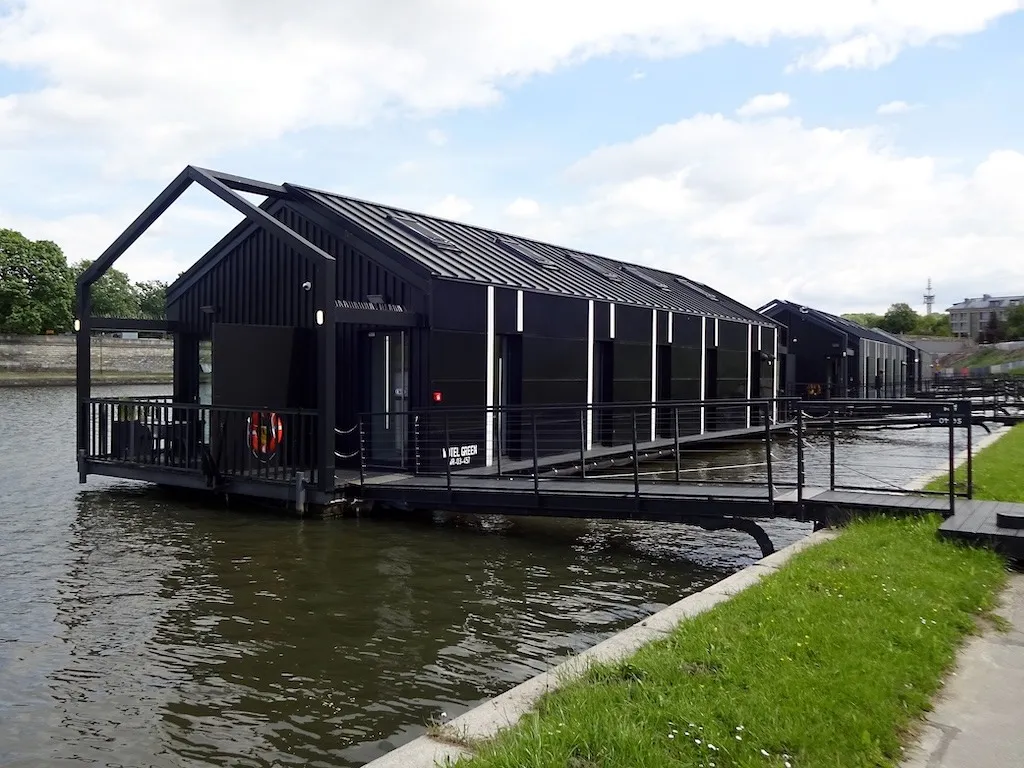
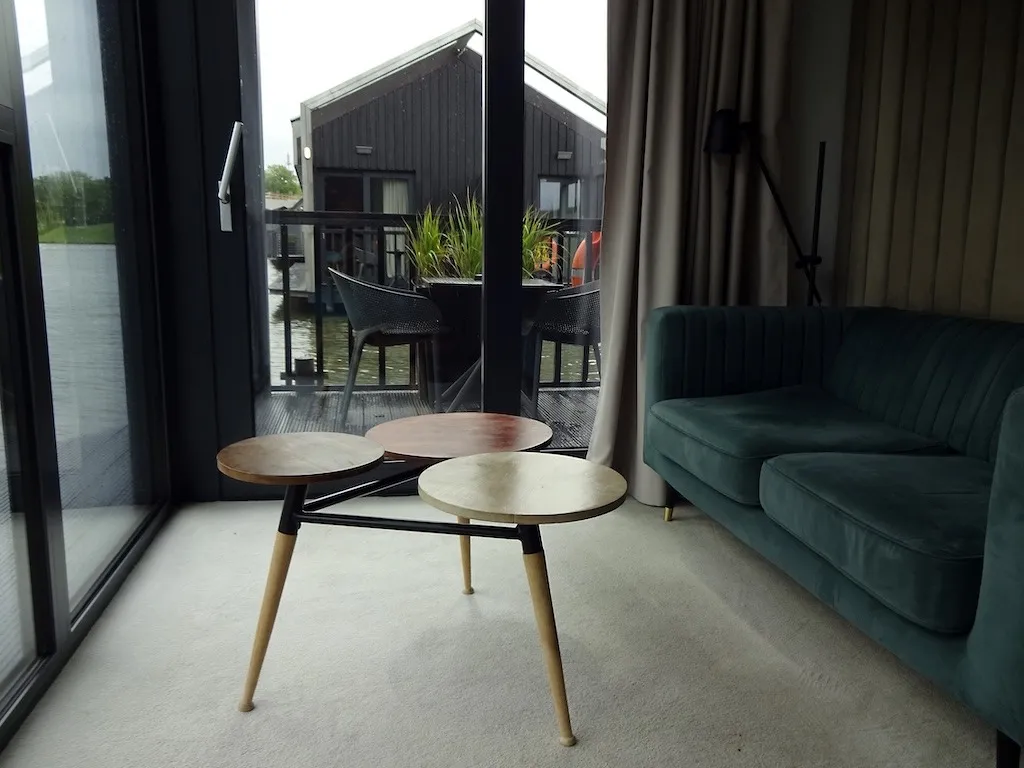
I was staying at the New Port Hotel, a wonderful selection of floating cabins moored on the south bank of the Vistula River. It was a great experience and although very slightly out of town it proved to be the ideal bolthole for my three-day stay. I’d recommend it, if only for the novelty aspect.
You can get a Kraków Card before you travel – you need to buy it online – but I couldn’t get the site to accept a payment! As it turned out, I don’t think I’d have benefited from having one, anyway. I didn’t use the local transport network and some of the places I visited aren’t included with the card. Think carefully before taking the plunge as some of the things you’ll want to visit may not be covered by it.
Getting your bearings
There are two landmarks that you should keep in the mind – the central square and the castle. Once you’ve sussed out where they are, you’ll be sorted. Everything radiates from around these two locations.

I started my adventure underground – right beneath the central square – in the Rynek Underground Museum. Tickets are sold on the west side of the Cloth Hall (Sukiennice), the entrance is around the other side. And then it’s down the steps and backwards in time.
The main exhibition covers the establishment of Kraków, its early history and its connections to medieval Europe when it was one of the continent’s chief centres of trade and culture. It was while down in the bowels of the earth that I learnt about vampire burials!
A graveyard was discovered during an excavation of the old town, which contained some bodies in the foetal positions, with their heads placed between their legs. These individuals were suspected of being vampires and this specific configuration was supposed to keep the undead secure in their graves. The locals also practised trepanning around the same time!
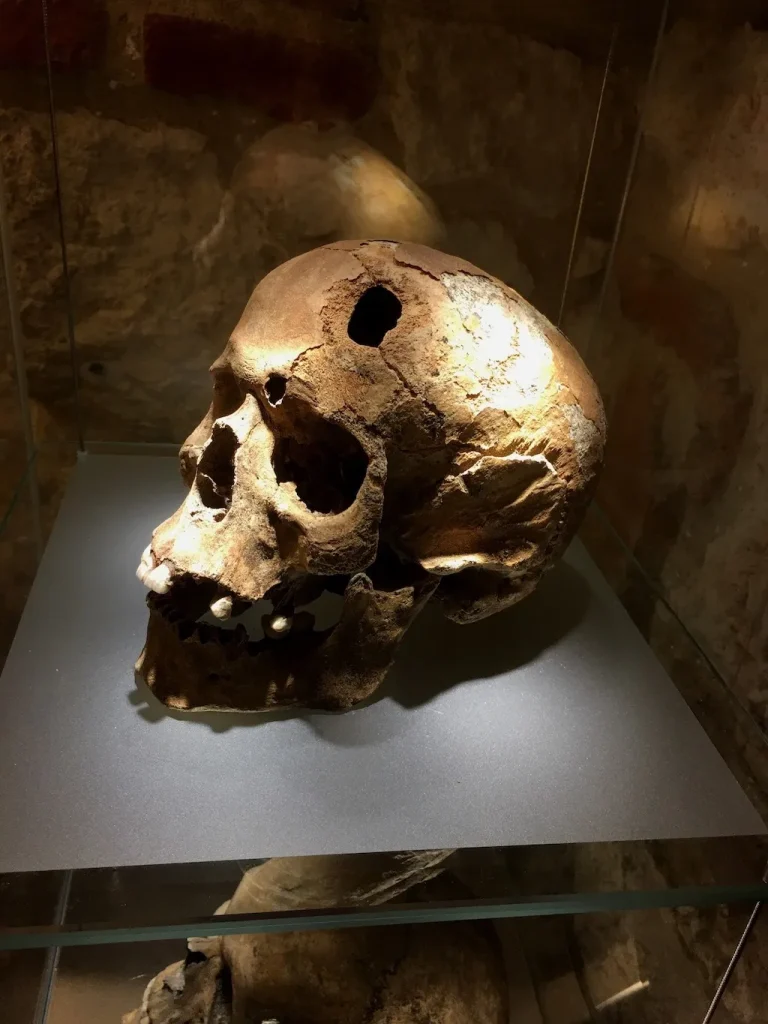
Send him to the salt mine
I’d pre-arranged a visit to the Wieliczka Salt Mine, a UNESCO Cultural and Natural World Heritage site just 30 minutes out of town. I booked my half-day trip with Legendary Krakow and I can thoroughly recommend the company on the strength of my experience.
The mine started operating in the 13th century and continuously produced table salt until 1996 when flooding and falling salt prices meant it was no longer viable. During that time a vast labyrinth of tunnels was cut – mainly by hand; during my two hours underground I saw 1% of the total workings! Its passages and chambers extend for more than 178 miles (287 kilometres).
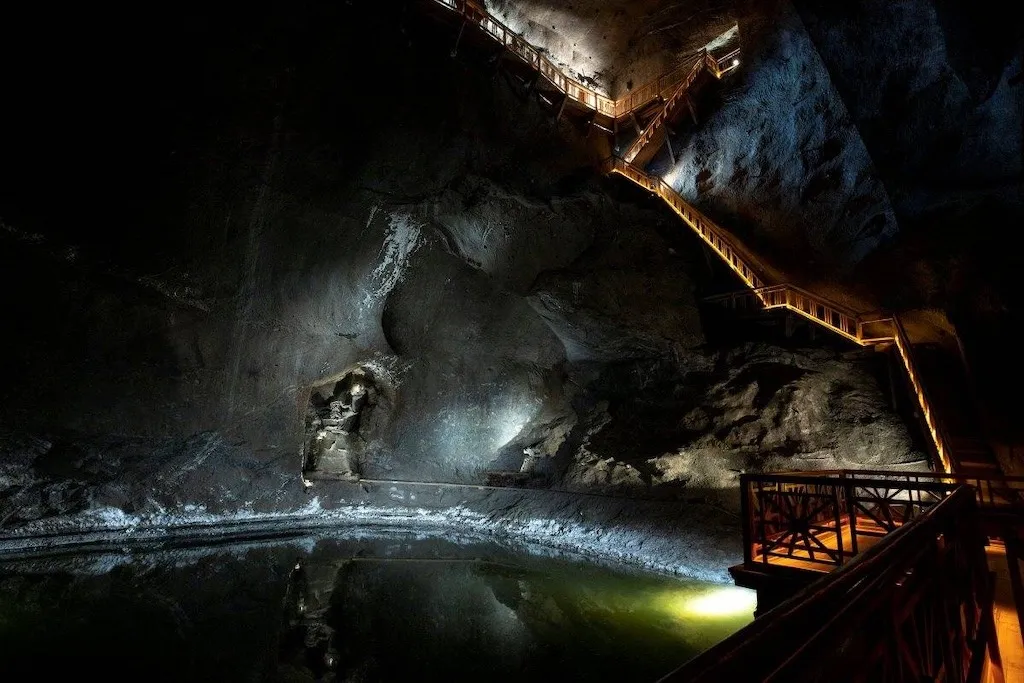

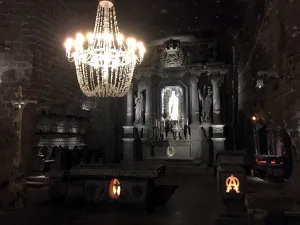
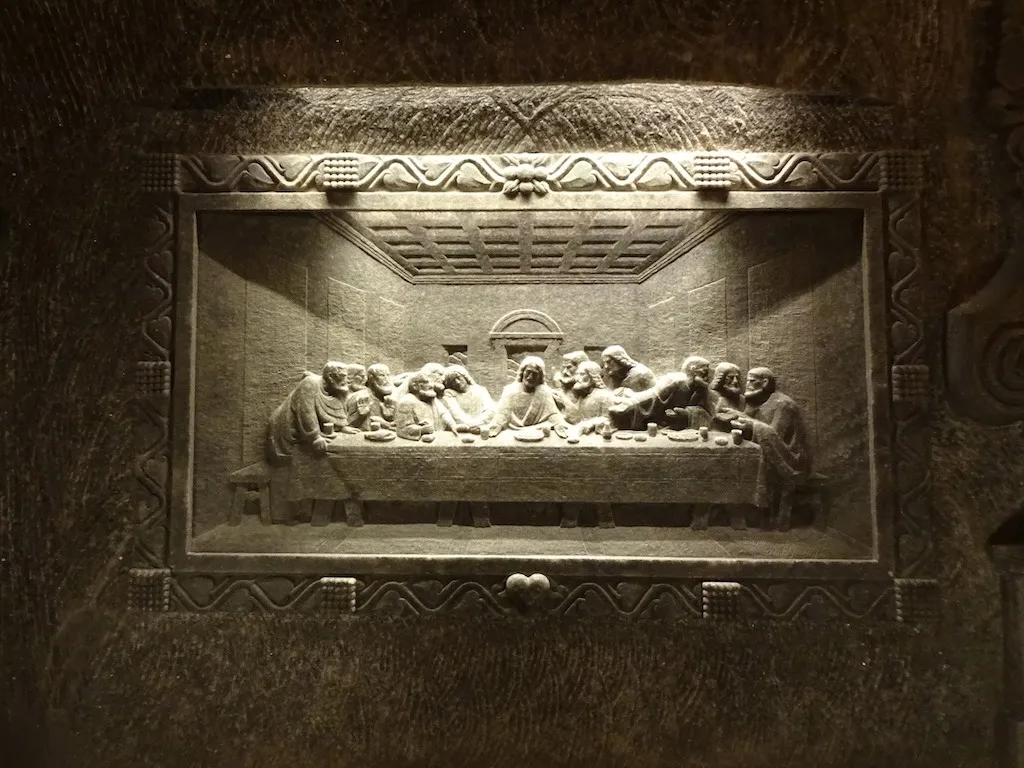
Our guide was friendly and informative – the ancient art of burning off pockets of explosive gas was an eye-opener! However, the real treat was Saint Kinga’s Chapel, which was principally built by just three men: Józef Markowski, Tomasz Markowski and Antoni Wyrodek. That boggles the mind. The chapel also dazzles the senses. Today it’s used for private functions, including weddings.
The lady with an Ermine
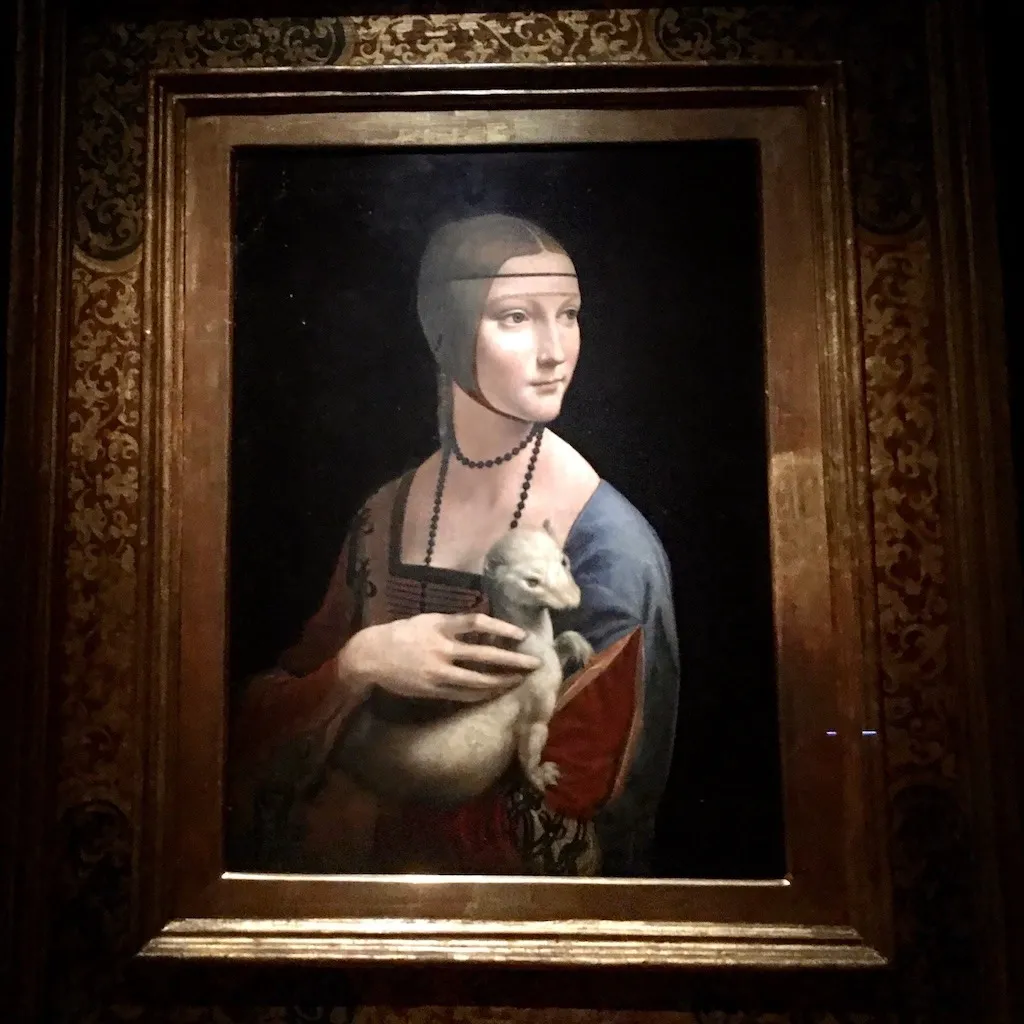
Leonardo da Vinci’s painting, ‘The lady with an Ermine’, is located in Kraków’s Czartoryski Museum, a meandering maze of galleries and corridors north of the main square. The da Vinci masterpiece is truly wonderful – it somewhat overshadows the other exhibits – but this topsy turvy muddle of a building is home to some other genuinely wonderful items.
My favourite was a small silver figure from pharaonic Egypt but I was also captivated by a sculpture of Hercules grappling with a lion – artist unknown. The final rooms on the first floor feature the oriental collection, including a fine bronze cast of a Chinese dragon and statues of Indian deities. All are magnificent.
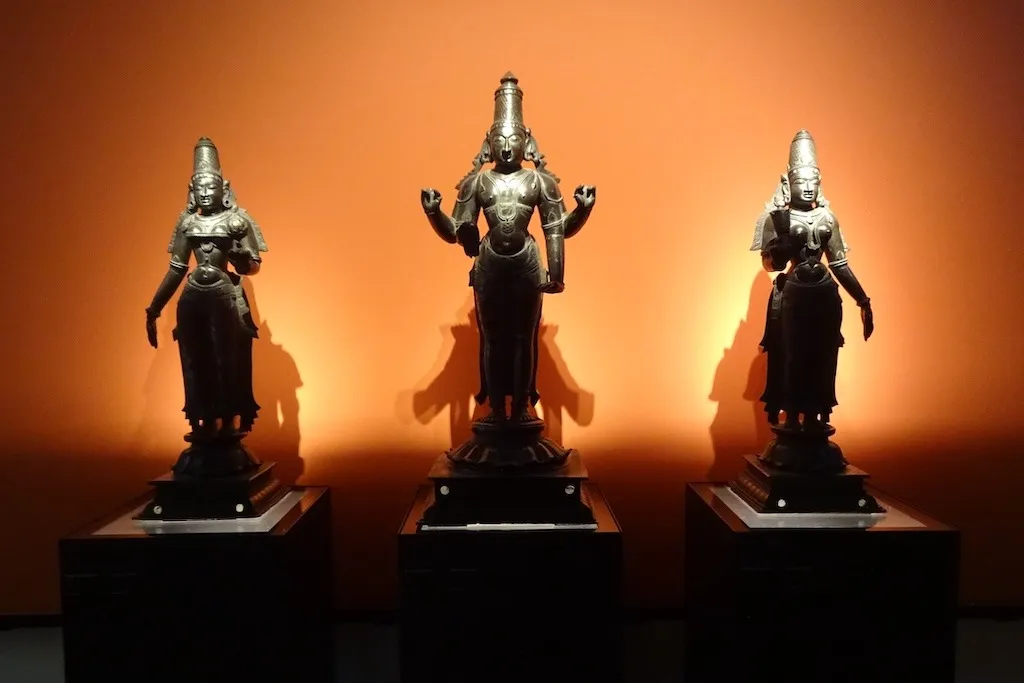
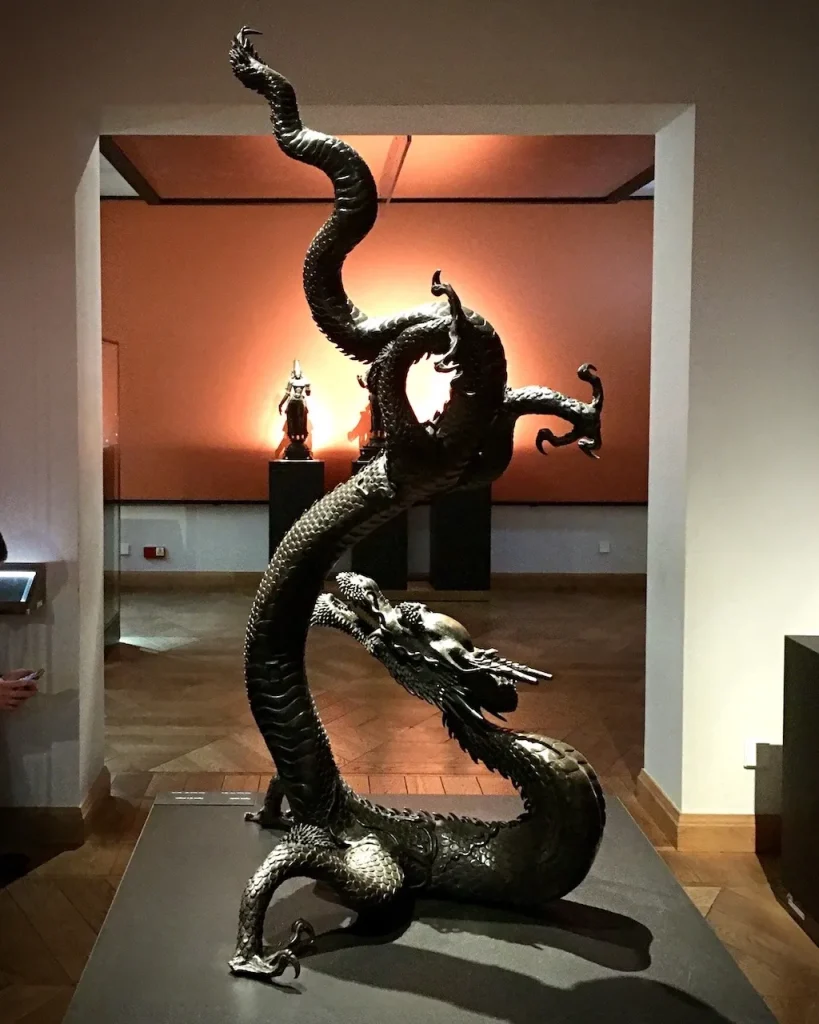
It was at this point I located a sports bar, ordered a pint (or two) and settled down to watch Crystal Palace win the FA Cup. I staggered back onto the street a couple of hours later with a sore throat and a head full of happy memories.
A brief guide to the local cuisine
Pierogi – small dumplings stuffed with a mix of potato, cheese, mushrooms, pork, cabbage etc – are a must. My favourites were Pierogi Ruskie, which contain cottage cheese, but I didn’t try a variant I didn’t like. A dollop of sour cream and some fried onions finished off the plate, creating what might be the best ever hangover cure.
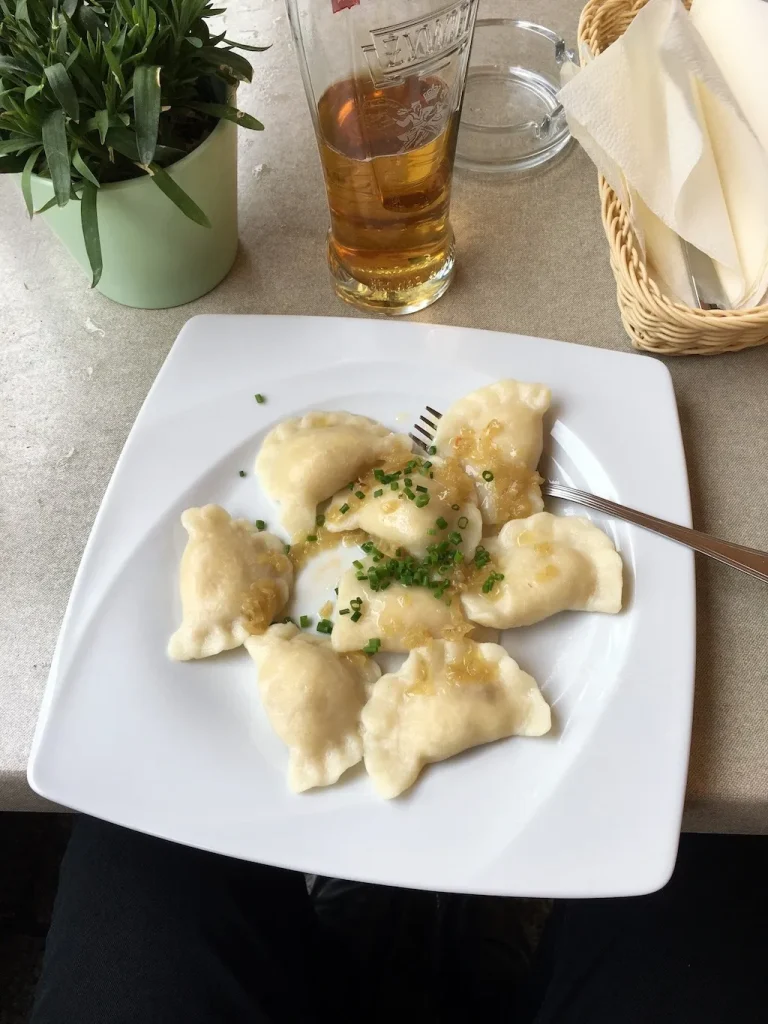
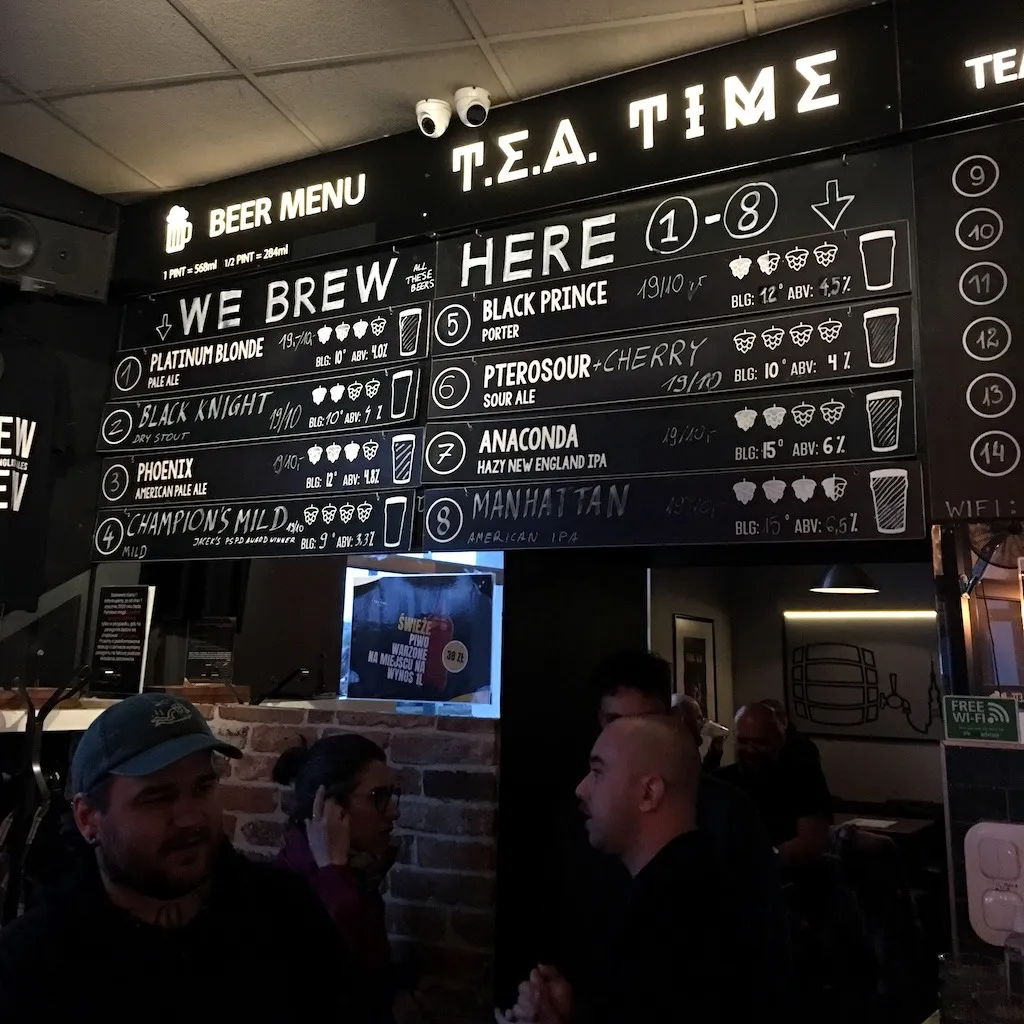
Which rather neatly brings me on to what to drink. The T.E.A. Time Brewpub would be my regular if I lived in Kraków. The place was very friendly, with great staff and a splendid selection of beers. I spent a happy couple of hours supping a pint or three, including a black IPA!
Back to the culture
Wawel Royal Castle is one of the city’s main landmarks and a major attraction. However, getting in is unnecessarily complicated – the seemingly simple process of buying a ticket is, frankly, baffling. Do you want Castle I access, or Castle II? Maybe you want to visit the Wawel Underground with the Royal Gardens? Hang on a sec… what about adding the Tower and the Dragon’s Den? And… and… WOT!
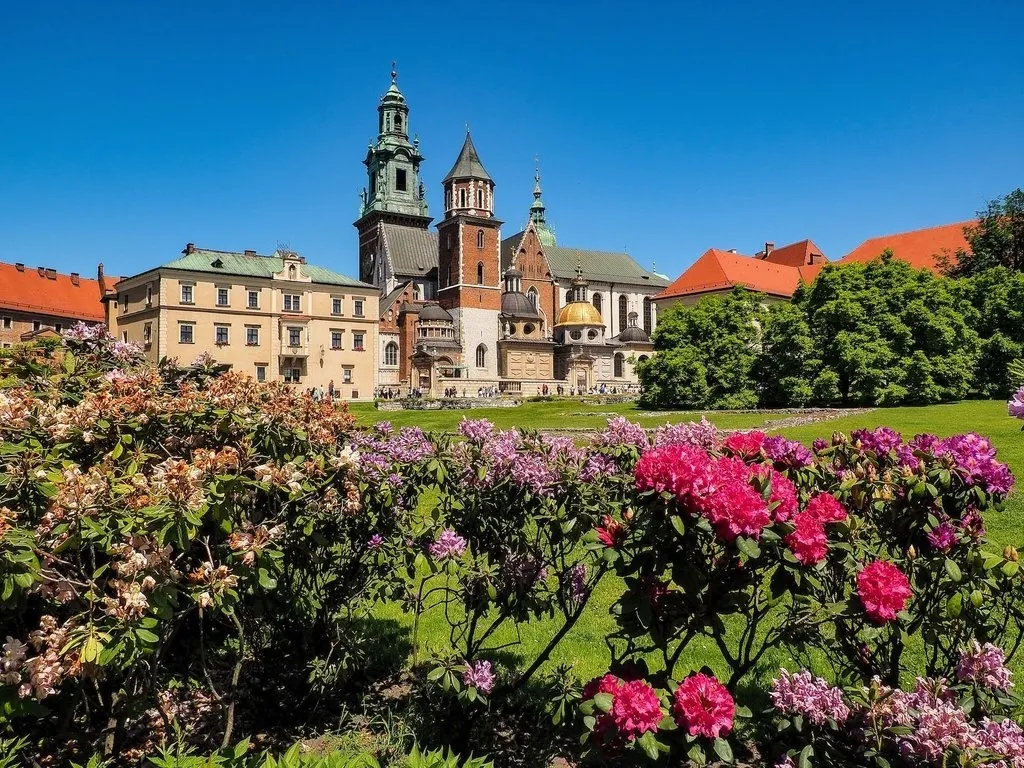
Different tickets have different prices and the various parts of the castle seem to be open at different times. My brain waved the white flag – I settled for Castle I and II, which meant I had to wear a badge for a part of my time and I honestly have no idea why. All the fussing about with tickets damped my enthusiasm – I couldn’t help feel that I’d not got the best ticket for me – but it’s a ‘must see’ destination and I’m pleased I went.
However, if you’re planning on visiting the castle, which was the residence of the kings of Poland and is now one of the country’s main art museums, book online (the queue was very, very slow) and sort out which bits you want to visit before clicking on the purchase button. Anyway… back to the dragon.
The legend of the dragon
According to a 13th century legend, the Wawel Dragon was a proper nuisance, eating people and cattle with total impunity. No one could work out how to kill the beast until one day the sons of King Krak came up with an idea. They filled a cow carcass with explosive sulphur, which the greedy, fire-breathing dragon gulped down. BOOM! Everyone was saved!
A later chronicler credited the plan to a cobbler named Skub. He also added that the dragon’s cave lay beneath Wawel Castle. Today, the opening to the lair is marked by a statue of the dragon…

But what of the crafty cobbler? He married the King’s daughter and founded the city of Kraków. Of course he did.
An army of ghosts
The Krzysztofory Palace is a small, baroque building located on the main square of Kraków. Its exhibits are spread over two floors – one below and one above the main entrance. The permanent display, ‘Krakow from the beginning, to no end’, is a lot of fun, covering the political and social development of the city outside its doors.
Amongst all the serious history I also learnt about Zero Theatre, an unfathomable dramatic concept conceived by Tadeusz Kantor (1915 –1990), a local avant-garde artist, painter, draughtsman, stage designer and director. His theatre laboratory also created the charmingly named Theatre of Death, which rather neatly brings me onto my next highlight.
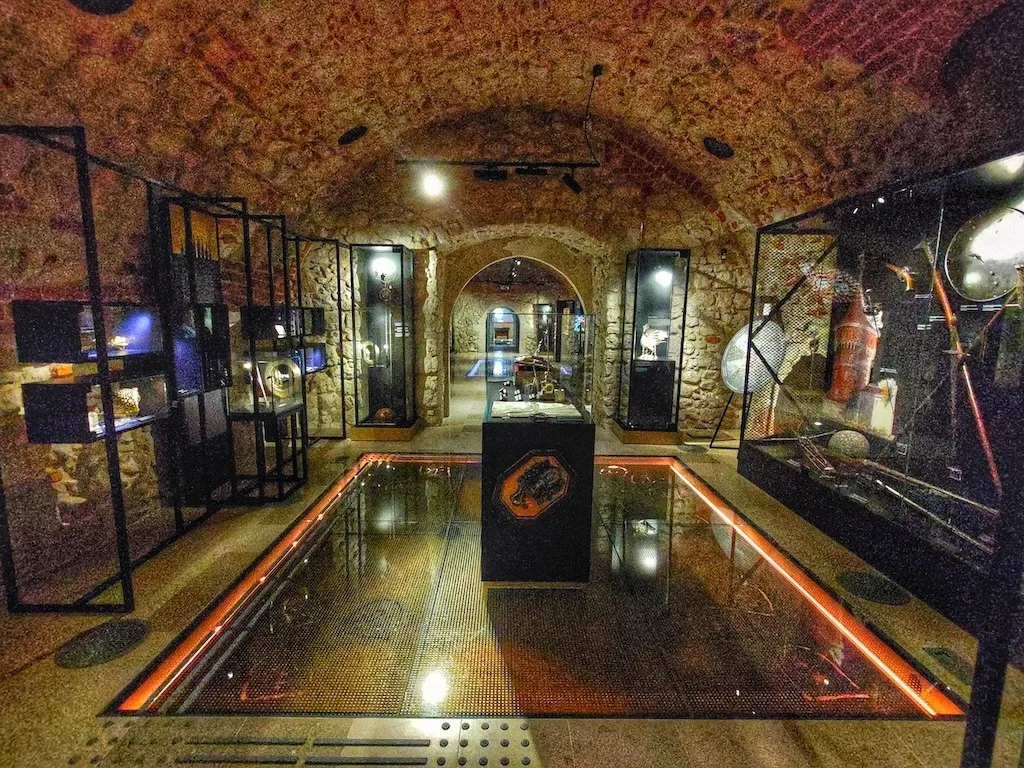
Kraków and its surroundings have managed to accumulate a pretty impressive pantheon of ghosts, whose legends are told in the museum. For example, a nearby village is haunted by the Black Lady – the ghost of an evil, wasteful duchess who was struck by a lethal bolt of lightning. Meanwhile, the Wielopolski Palace is haunted by the ghost of a young woman, known as the White Lady, whose skeleton was found walled up in its basement where she was interred for having an affair with a butler (apparently).
The local Dominican church is home to some wraithlike fiends who were chased away by Saint Jacek Odrowąż, clearly not very effectively, while the ghosts in Saint Mary’s Church belong to convicts who used to spend their last night there before being executed. To this day you can hear them moan and curse!
The chicken that refused to die!
And finally… the demonic chicken. The story tells of a woman in a castle’s kitchen about to prepare a chicken stew. Before she could snap the neck of the main ingredient it made a dash for freedom and headed off at full speed for the dungeons.
The cook followed in hot pursuit and finally cornered the absconding chicken down in the bowels of the castle… by which time that evening’s dinner had grown horns and could speak. This was clearly no ordinary bird!
“Spare my life and I will reward you with all the gold you can carry,” said the chicken. “But there is one proviso… you must not look back at me as you leave.”
The astounded woman agreed, collected her riches… and looked back. Her gold immediately turned into rags and dust! The moral of this story is probably something to do with curiosity but I’m not entirely sure it really matters. Human 0, demonic chicken 1…
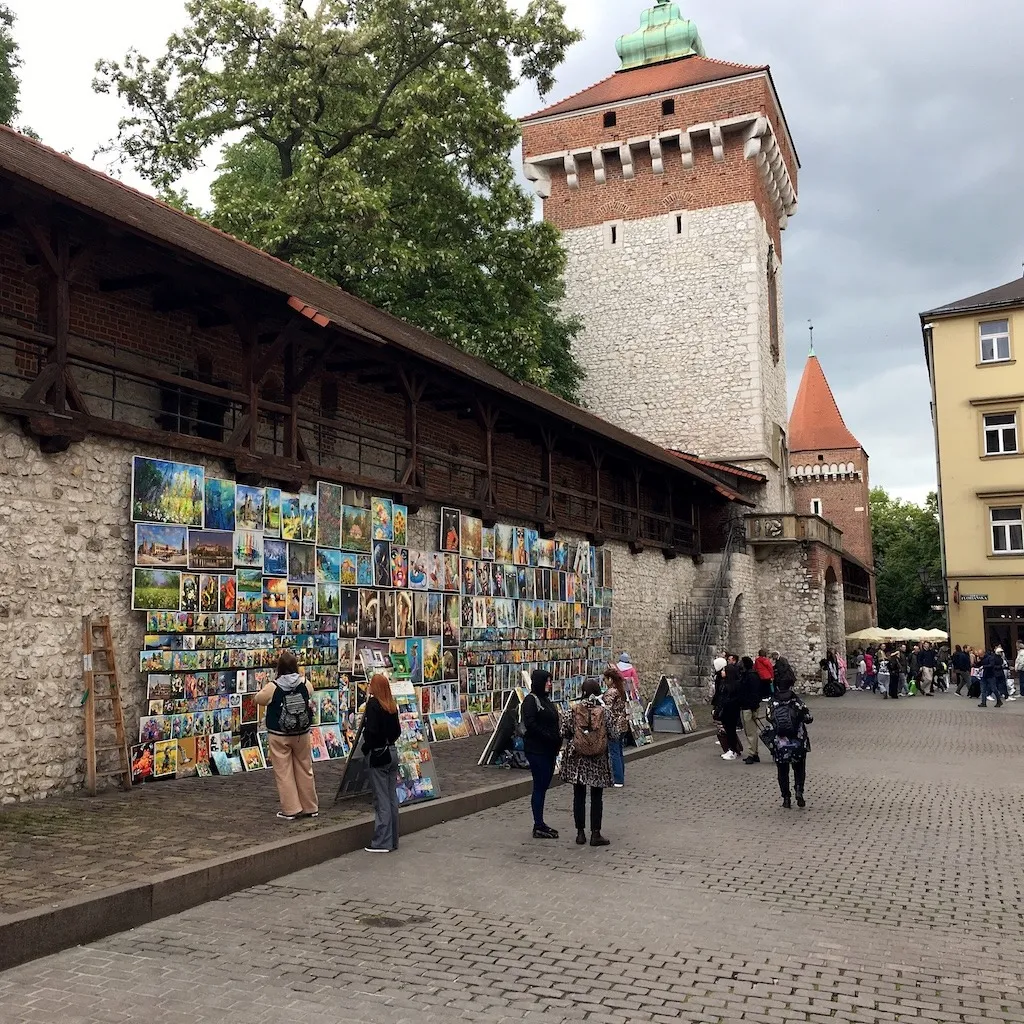
Koniec podróży
During my brief stay I barely scratched the surface of what Kraków has to offer. There are more museums to see (I regret not visiting the Museum of the Home Army and the Palace of Art) and there’s the cathedral, too. Most importantly, I didn’t visit Auschwitz. Given the length of my break I couldn’t fit it in. However, I will make that trip at some point – I consider it a sombre private duty, and it’s one I will fulfil.
So, until next time, thank you Kraków – you were great.

